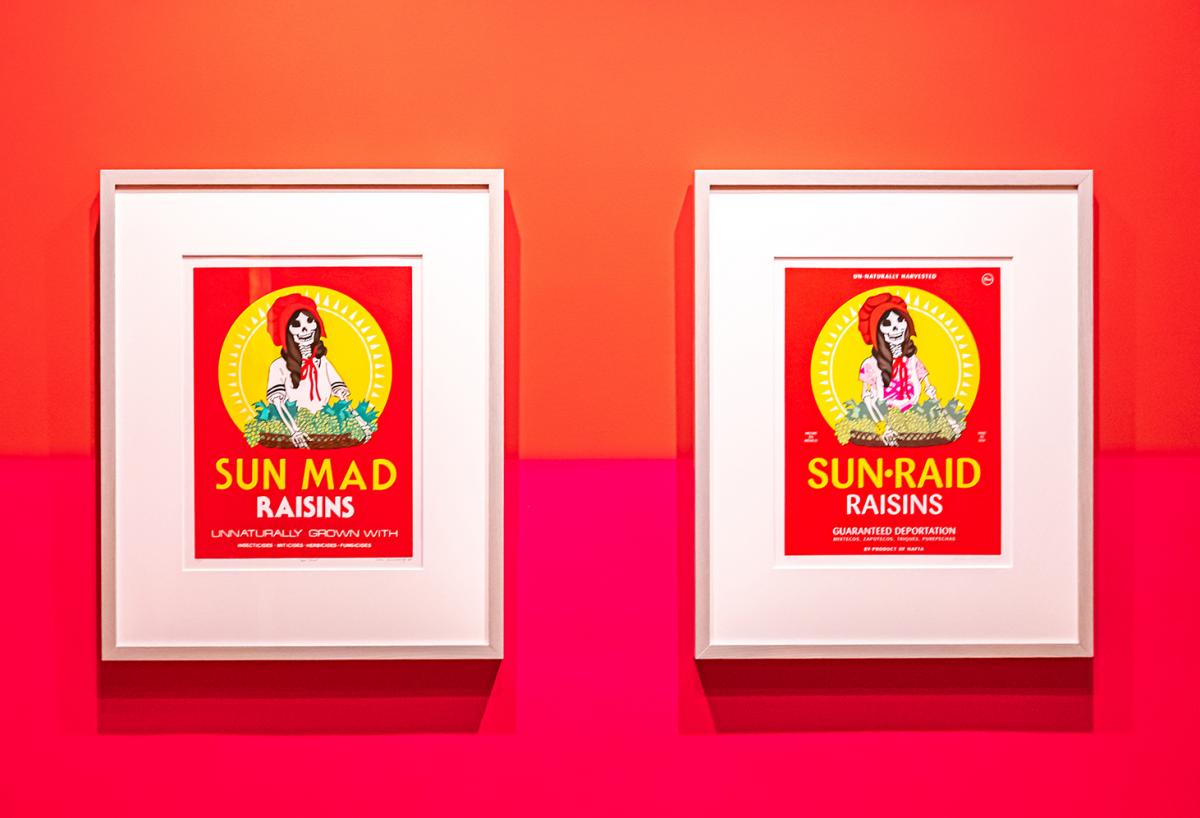
¡Printing the Revolution! The Rise and Impact of Chicano Graphics, 1965 to Now presents selections from SAAM’s extensive graphic holdings. It recognizes the remarkable history of Chicano graphics arts and acknowledges the medium’s special role in staging critical debates about US history and identity. Chicanx artists, institutions, and networks have demonstrated commitment to the medium that is noteworthy, innovative, and largely overlooked in broad art museum surveys of US graphic arts. Printmaking as a medium experienced a resurgence in America in the period following World War II, which many art historians consider to be an “American print renaissance.” However, there is a discernable color line that pervades exhibitions that encompass the rise of “fine art” printmaking during this period, demonstrating how racial segregation shaped the art world and subsequently art history. While other graphic artists were making prints for exhibition, Chicanx graphic artists capitalized on the print medium’s potential for mass distribution and social influence to project revolutionary ideas not only in the communities where they lived and worked, but across the United States and globally. As a result, Chicanx and other non-white artists appear regularly in studies and exhibitions of political graphics—most of which focus on silkscreen or offset printmaking, two techniques historically viewed outside the realm of fine art. ¡Printing the Revolution! presents an inclusive view of American art history featuring previously marginalized voices from Chicano art, including women and LGBTQ+ individuals, and challenges this historical sidelining of Chicanx artists and their cross-cultural collaborators.
¡Printing the Revolution! features a pair of iconic screenprints from Ester Hernandez, one of the leaders in the Chicano civil rights movement. In Sun Mad, Hernandez reconfigures the cheerful branding of the Sun-Maid raisin company into a grim warning. In response to her family’s exposure to polluted water and pesticides in California’s San Joaquin Valley, Hernandez sought to unmask the “wholesome figures of agribusiness,” such as the Sun Maid. The skeletal figure draws attention to the dangers and adverse effects of the various chemicals listed in the print’s lower register.
Twenty-six years after her original, Hernandez reimagines her classic Sun Mad poster as a condemnation of US Immigration and Customs Enforcement. In addition to changing the title from Sun Mad to Sun Raid, she outfits the calavera (skeleton) with an ICE wrist monitor and a huipil, a traditional indigenous garment. This latter reference suggests how indigenous people from Mexico and Central America represent a segment of undocumented immigrants in the US. Hernandez issued this print at a time when the George W. Bush administration was being widely criticized for its high level of workplace raids.
SAAM’s landmark exhibition, ¡Printing the Revolution! The Rise and Impact of Chicano Graphics, 1965 to Now, explores how Chicanx artists have linked innovative printmaking practices with social justice. This blog post is part of series that takes a closer look at selected artworks with material drawn from exhibition texts and the catalogue.



















